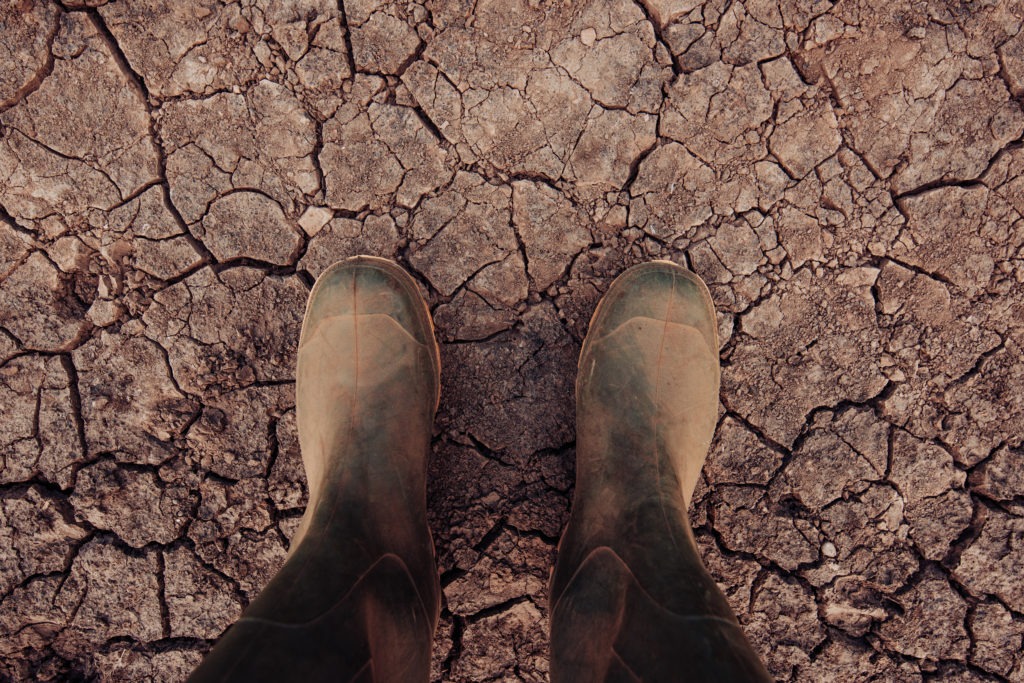
Parental Note: This experiment is geared towards ages 8 and up.
Additional Note: This experiment will take roughly one hour to set up the project and make observations. Adult assistance is required to cut soda bottles, collect soil, mulch, leaves and grass (with roots attached). This experiment can be done inside our outside, but it recommended to perform outside since water and dirt may spill in the process.
Experiment Overview:
Waves, wind, water, and glaciers shape and reshape Earth’s surface by gradually wearing away (eroding) the rocks and soil. Through these processes, the material that makes up Earth’s crust is moved from one place to another. When it rains, water that is not used by plants or dried up by the sun slowly flows through the topsoil downhill into nearby water basins (lakes, rivers, streams, aquifers, etc.). When the flow of water is slow, land changes and erosion occur very slowly over time. If the flow of water in the topsoil is rapid, then changes to the landscape may occur rapidly as well. One example of this rapid movement of topsoil is a landslide.
Soil is rich in nutrients, detritus (dead organic matter such as wood chips and leaves) and sometimes may even contain harmful pesticides (man-made chemicals to control weeds and insects). All of these things contained in soil can be carried by land runoff and eventually pollute our waterways that we rely on drinking water. In areas where the land is poorly managed, too much soil erosion can occur which leads to poor water quality. In this activity you will explore how water runoff affects the transport of topsoil and water quality under different land conditions. You will compare the following conditions: 1) soil with rooted grass, 2) loose soil only, and 3) soil with detritus.
Before beginning, think about the following questions and write down your predictions:
- When you pour clean water into each of the three soda bottles, what do you think will happen to the water after it passes through the bottle with only loose soil? How about the bottle with soil and detritus? And the bottle with soil and rooted grass?
Experiment Materials:
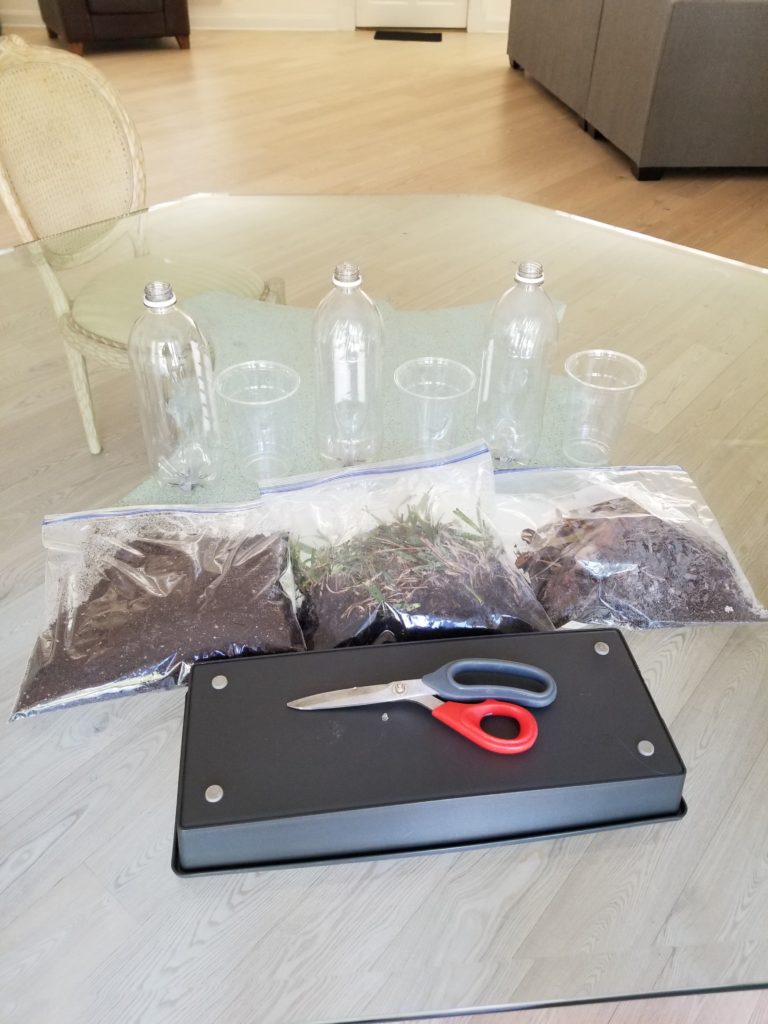
- 3 soda bottles
- 3 clear plastic cups
- 2 Ziplock bags
- Scissors
- Small garden shovel
- Soil
- Leaves
- Mulch
- A 5 inch x 3 inch rectangle of grass (with roots and soil in tact)
- Stool or rectangular container that can fit all 3 bottles side-by-side and lift them 3-5 inches off ground
Experiment Process:
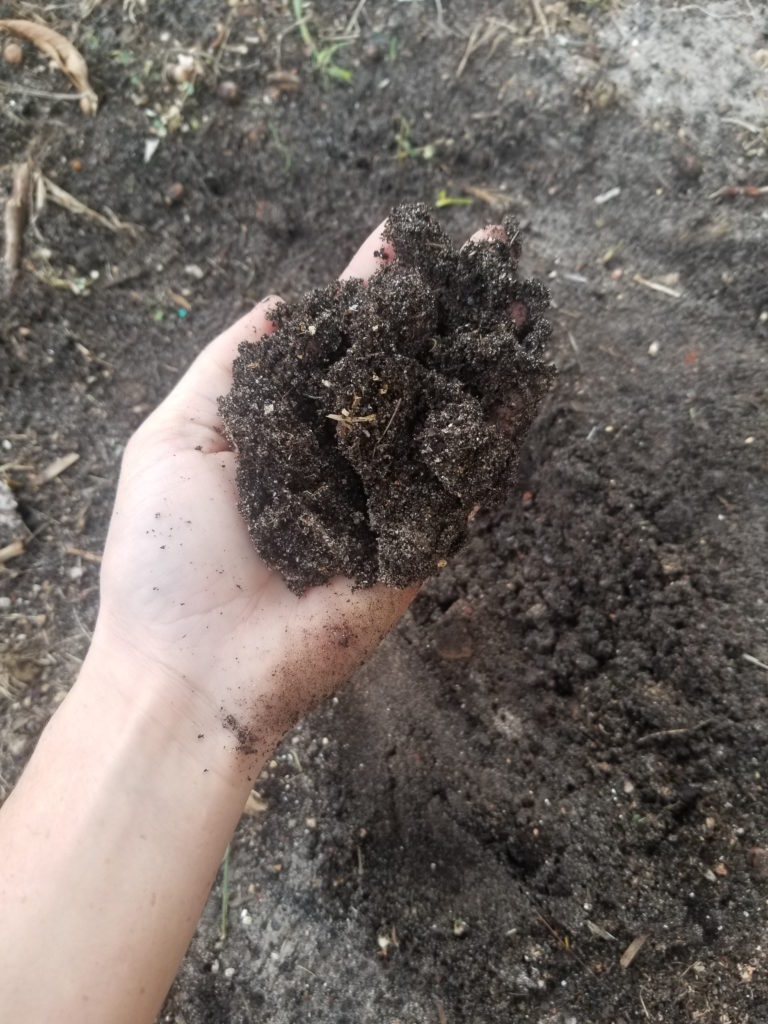
Step 1
Collect loose soil and detritus (leaves, wood chips, twigs, etc.) and place in separate ziplock bags or containers.
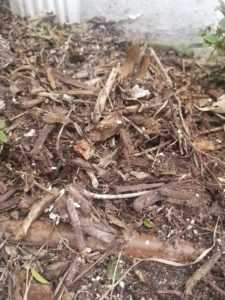
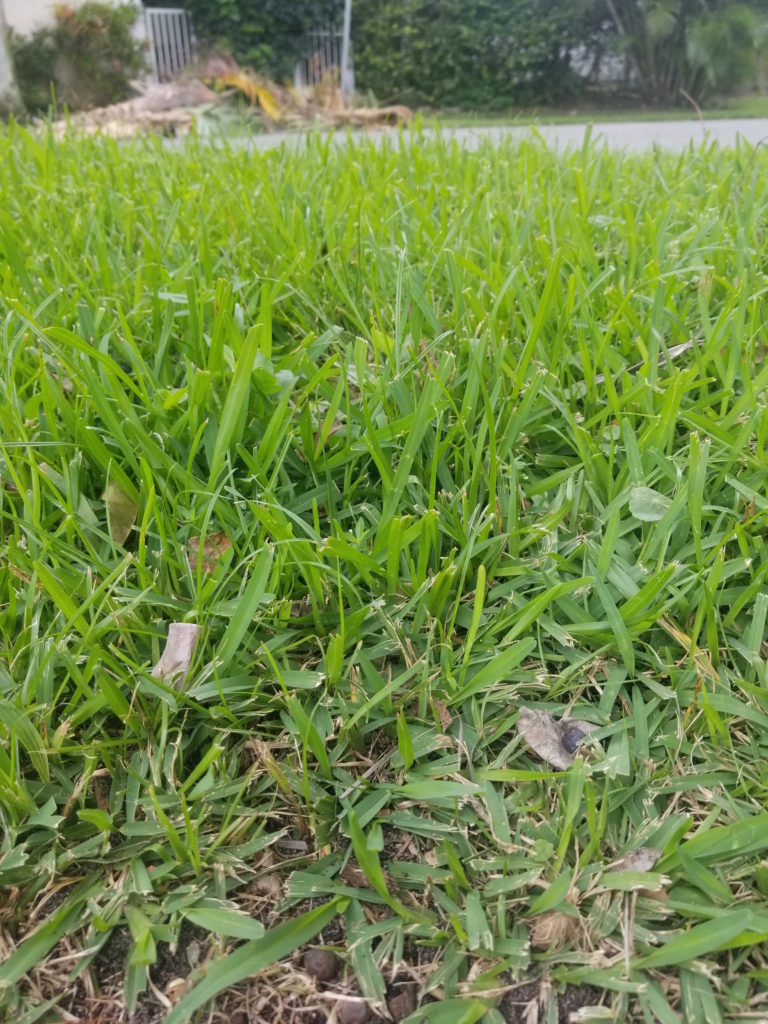
Step 2
With assistance from an adult, use a small garden shovel or other sharp tool to cut out a 5 inch x 3 inch rectangle of grass with roots and soil attached and place in a bag or container.
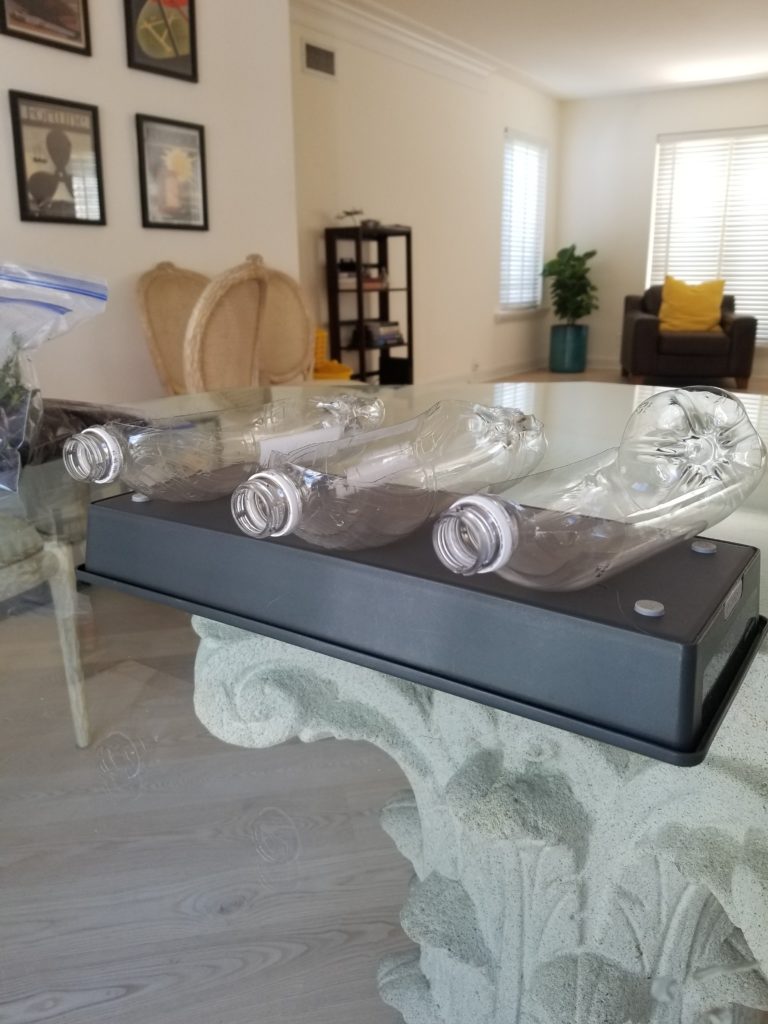
Step 3
With assistance from an adult, use scissors to cut a large rectangle out of the side of each soda bottle. Place the bottles on their sides on a stool or upside-down container to lift them a few inches off of the ground.
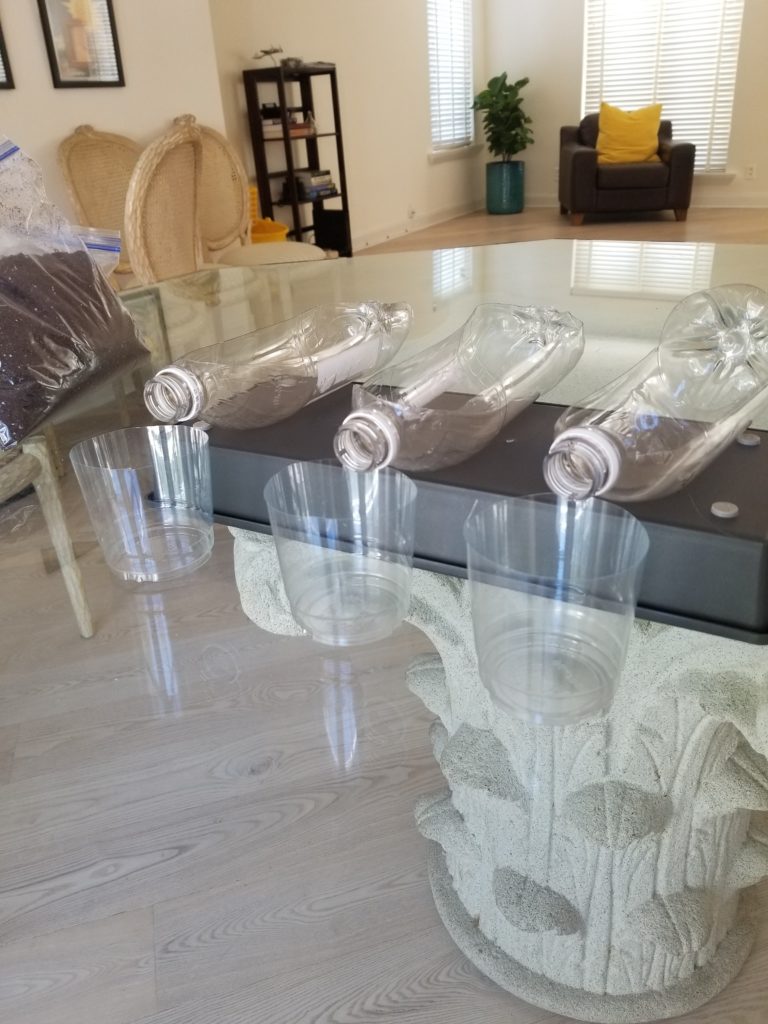
Step 4
Place a clear plastic cup under the neck of each bottle. If the cup is too tall for water to pour into it from the soda bottle, then use scissors to trim the plastic cup and make it shorter. Make sure you don’t cut the cups too short – they need to have enough room to hold the water you will pour into the soda bottles.
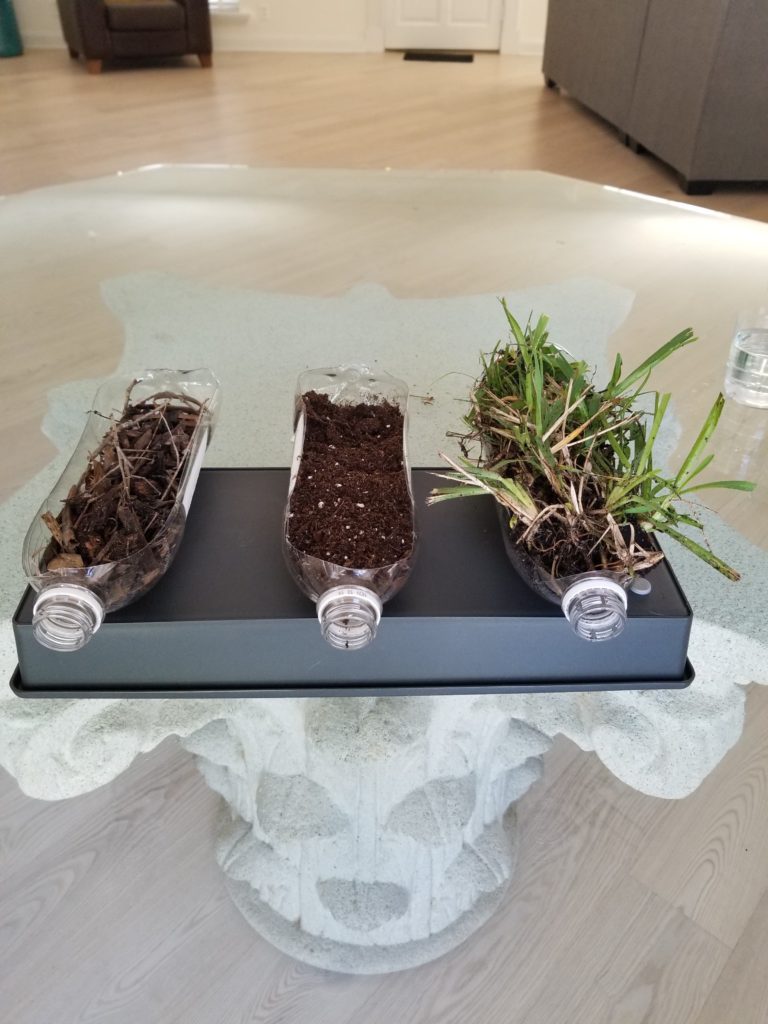
Step 5
Fill one soda bottle with loose soil, one with a thin layer of soil and a top layer of detritus, and another with a thin layer of soil and a top layer of grass with roots. Press down on the grass and detritus so they are packed firmly into their containers. Leave the soil loose in the soda bottle that contains only soil in order to represent the type of soil found on deforested land.
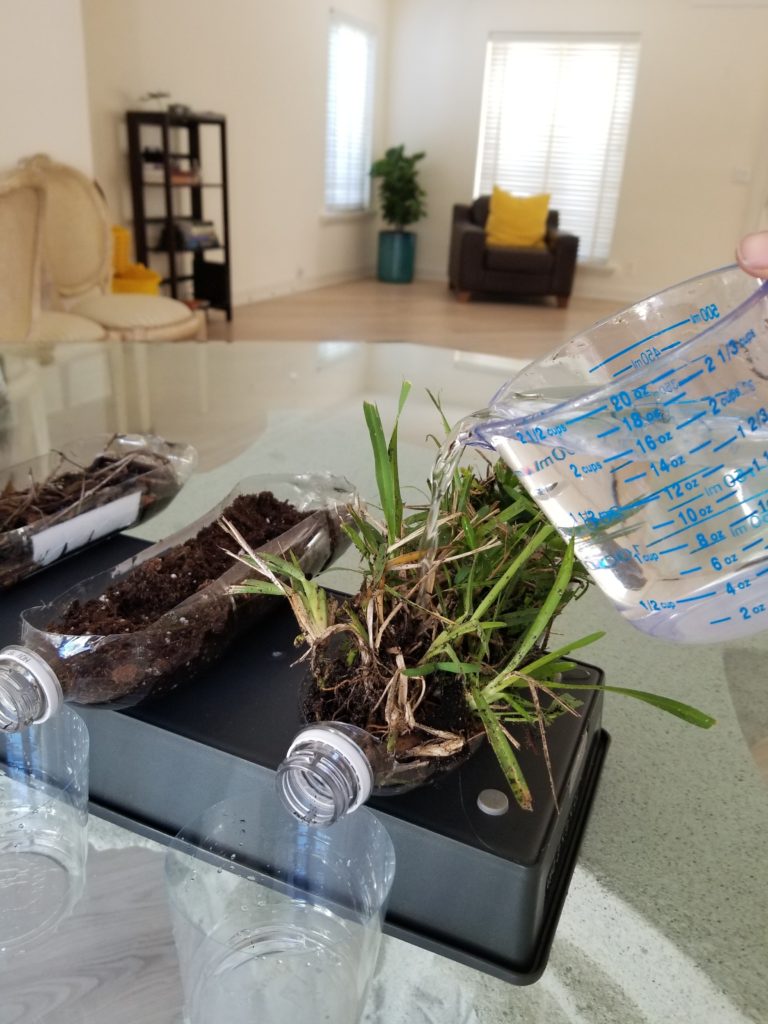
Step 6
Pour water very slowly from a pitcher into each soda bottle and watch as the water passes through the soil and flows into the water reservoir (plastic cup). Try to cover the entire surface rather than just pouring the water in one spot. Observe how much soil erodes from each container and flows into the plastic cups.

Share Your Results:
Which soil condition had the least amount of runoff? Which had the most? Why?
Conclusions:
Erosion occurs more slowly when soil contains both living plants and detritus. This is because plants slow down water as it flows over the land, allowing much of the rain to soak into the ground. The branches and leaves of living plants also soften the fall of rain drops so that they do not hit the ground too hard and break apart the soil. The roots of plants also hold soil together and make it harder to erode.
Detritus can protect soil from increased erosion by covering and protecting the soil beneath it. Similar to the leaves on living trees, the dead leaves on the ground on top of soil can soften the fall of rain drops so they cannot easily loosen up and carry away the soil. As detritus falls in many layers on top of the soil, it weighs down on the soil and makes it more compact (dense or compressed). Compaction makes it harder for runoff to carry the soil away with it. Loose soil, such as soil found in deforested areas, can be moved much more easily.
Extension:
Human activities such as cutting down trees/removing vegetation or disturbing the ground (e.g. mining), are activities that may increase erosion. As you saw in your experiment with the soda bottles, when we remove too many plants from an ecosystem, there can be negative side effects such as reduced water quality. When the water flowed into the plastic cups, you may have noticed a difference in the color of the water coming out of the soda bottles. The soda bottle that had the plants should have produced the clearest water in the plastic cup because the shoots of grass protected the soil below from the water falling from above, and also because the upper layer of soil is held together by the roots of the plants.









